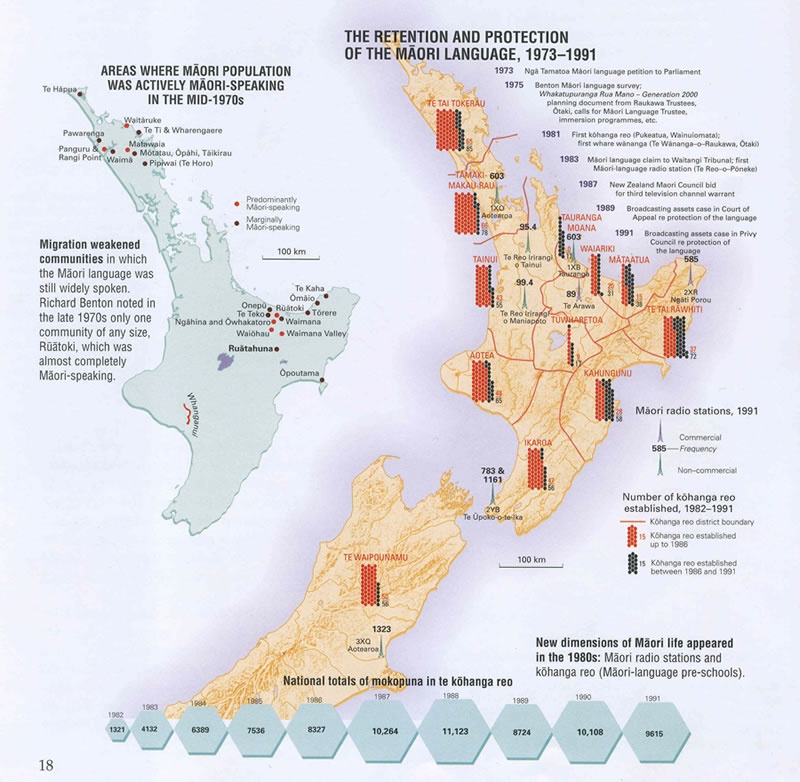
Map showing the retention and protection of the Māori language, 1973-1991.
The rapid urbanisation of Māori during and after the Second World War posed great challenges for Māori communities. A central question was how the culture would cope with the change brought about by living in urban centres, away from its strong rural roots. And if it were to survive and flourish, who would be best placed to meet Māori needs: predominantly non-Māori governments or Māori themselves, through organisations such as the Maori Women's Welfare League, founded in 1951?
The ‘Hunn Report’ on the Department of Maori Affairs, released in 1961, confirmed assimilation as official government policy. But more and more Māori wanted their unique culture to survive in both towns and rural areas.
From the 1970s onwards, Māori radio stations, television programmes, theatre, music, art and literature were developed or expanded. Language programmes for all ages were initiated, and educational institutions in which Māori was the main language of communication grew. Prominent among these have been kōhanga reo, first set up in 1982 to immerse toddlers in a Māori-language environment.
Broadcasting was significant in promoting te reo (the Māori language). The reservation of radio frequencies for Māori broadcasters enabled the growth of a range of radio stations aimed at Māori listeners. The Māori language and Māori music are heard frequently on these stations.
A Māori television channel began broadcasting in 2004. It screens programmes in both English and te reo, including drama, archival film, sport and Māori takes on reality television formats. Its announcers move freely between the two languages.
Many non-Māori had not expected these changes. For some, their pace and nature threatened notions of integration and idealised race relations. But for Māori, these were steps along the road to mana motuhake, with the retention of te reo a central feature.
Further information:
Links:
- Māori New Zealanders (Te Ara)
- Maori Language (An encyclopaedia of New Zealand 1966)
- Te Puni Kokiri
- Te Taura Whiri i te Reo Māori (Māori Language Commission)
Publications:
- The health of the Maori language in 2001, Ministry of Maori Development, Wellington, about 2002
- State of the Maori nation: twenty-first-century issues in Aotearoa, Reed, Auckland, 2006
- Speakers of Maori within the Maori population: based on data from the census of population and dwellings, 1996 & 2001, Te Puni Kokiri, Wellington, 2003

Community contributions